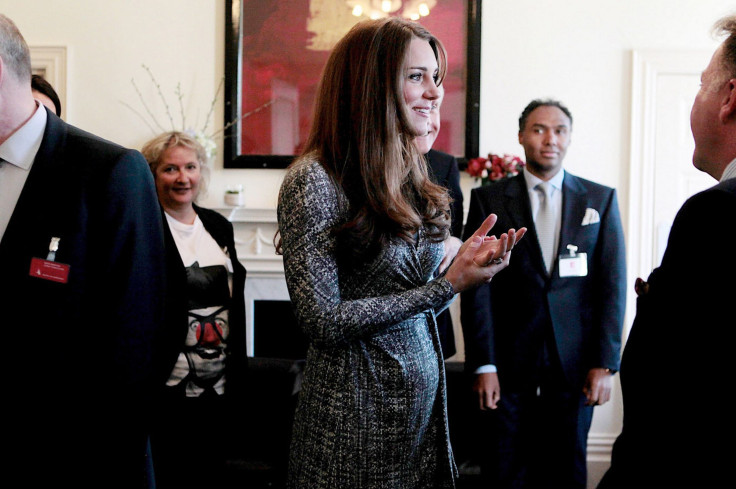HypnoBirthing: More Kate Middleton Hype Or An Effective Natural Childbirth Technique?

Kate Middleton is considering using the natural technique of HypnoBirthing to produce her royal baby. At least that's what recent reports from various sources claim. Of course, no one (except Kate) knows whether or not these rumors are true, but one thing can be decided: whether or not it is in your interest to follow her royal lead.
Designed to help women achieve a satisfying, relaxing and stress-free birth, HypnoBirthing focuses on dispelling the fears associated with childbirth. It is a natural method of childbirth that places education, visualization, and self-hypnosis at the center of the experience.
The Gold Standard
The Mongan Method of HypnoBirthing is "as much a philosophy as it is a technique," according to Marie Mongan, the originator. (Apparently there are different schools of thought on the matter.) The concept is thousands of years old, her website states. In fact, it is simply a recapturing of an ancient philosophy of birthing as interpreted by Dr. Grantly Dick-Read, an English obstetrician, who advanced the idea of natural childbirth in the 1920s. The Mongan Method teaches that, in the absence of fear and tension — or special medical circumstances — severe pain does not have to be an accompaniment of labor.
"When you change the way you view birth, the way you birth will change," states Mongan, who is an award-winning hypnotherapist and a former college dean. One look at her homey photo and an expectant mother will most likely feel utter trust of the woman awarded a Ford Foundation Fellowship to Harvard University.
When an expectant mother gains an understanding of how her birthing muscles work in perfect harmony — as they were designed to — she will trust birth, says Mangan, and her body will sufficiently relax. Free of the resistance created by fear, a woman will learn to use her natural birthing instincts for a calm, serene and comfortable birth.
Not a Trance, Not on Your Own
Using the method of HypnoBirthing, a woman experiences something similar to the daydreaming, or intense focusing, that occurs when she is engrossed in a book or a movie or staring into a fire. "Awake throughout, you will be aware of your body's surges and your baby's progress; but because you will have trained yourself to reach complete relaxation, you will be able to determine the degree and the manner in which you will feel the surges," states Mangan. ('Surges' is her word for contractions.) Free of the fear that prevents the muscles of the body from functioning as nature intended them to, a woman will feel her body release its natural relaxant, endorphins, to replace the stress hormones that constrict and cause pain.
Practitioners emphasize that HypnoBirthing is a technique for women who do not have "special circumstances" surrounding their pregnancies. In other words, the technique requires a mother be in good health, with no complicating birth factors.
HypnoBirthing is also an assisted birth process. Specially-trained practitioners, who train pregnant women to use the methods, can be found in 45 countries around the world and about 1,400 of them reside in the U.S. Many of these practitioners are, in fact, medical doctors.
Doctors Weigh In
"A few years ago I made a transition to HypnoBirthing, and I now truly believe that normal birthing does not have to involve pain," writes Dr. Lorne R. Campbell, Sr., Clinical Assistant Professor of Family Medicine, University of Rochester, in the forward to the book, "HypnoBirthing: The Mongan Method: A natural approach to a safe, easier, more comfortable birthing."
Dr. Craig M. Palmer, chair of the committee on obstetrical anesthesia at the American Society of Anesthesiologists, told CNN he wasn't familiar with HypnoBirthing, but noted it could be a useful technique. "Any sort of childbirth prep that a mother will undergo is useful from a medical and anesthesiologist's point," said Palmer. "The more prepared you are for labor, the more positive your outcome. As an anesthesiologist, any technique that improves patients' mental focus and state of mind is a good thing."
Finally, the Ohio-based Cleveland Clinic has begun teaching expectant mothers Mongan's technique at its Hillcrest Hospital and will be offering classes at its Fairview Hospital in October. "We have been overwhelmed with calls this past year," Rebecca Starck, Cleveland Clinic chair of regional obstetrics and gynecology, told U.S. News and World Report.
There are neither precise numbers as to how many women have given birth by this method nor is there any precise research as to its benefit. (One recent study, though, finds evidence that self-hypnosis may help relieve labor pain.) Nevertheless, HypnoBirthing deliveries have taken place at home and in hospitals, both with and without pain medication and epidurals. Some women have even delivered by cesarean section using the method. Ultimately, HypnoBirthing does not promise pain-free childbirth. In fact, the only thing it ever really promises is a birth with less anxiety.
Yet that may be worth nearly everything to an expectant mother.
Source: Semple A, Newburn M. Research overview: Self-hypnosis for labour and birth. Perspective Journal. 2011.



























